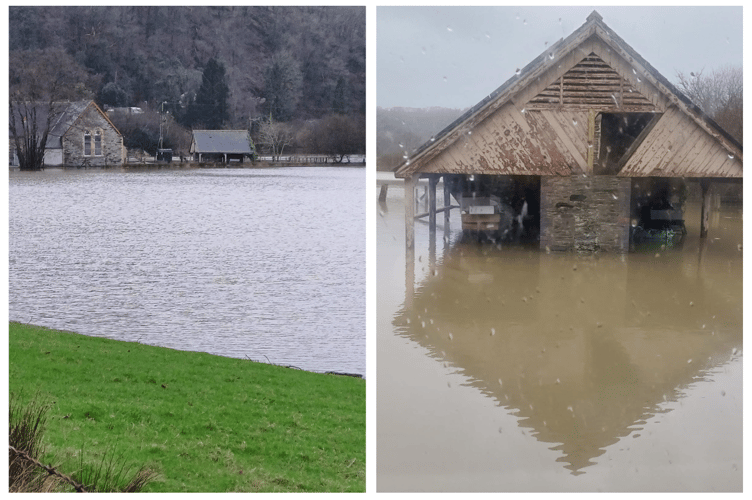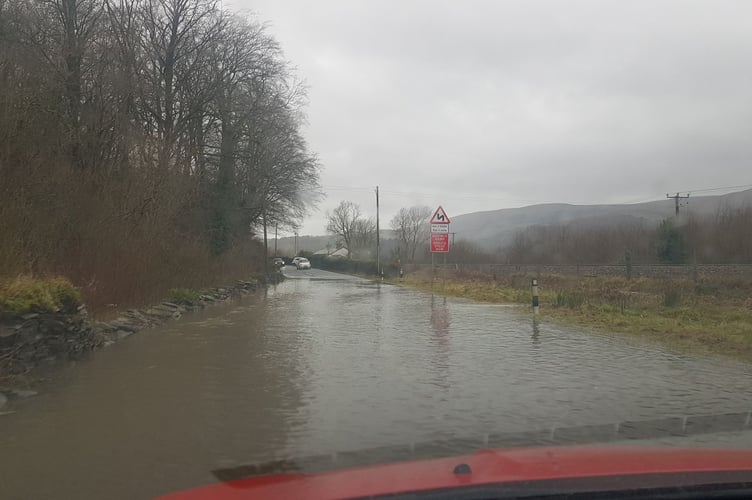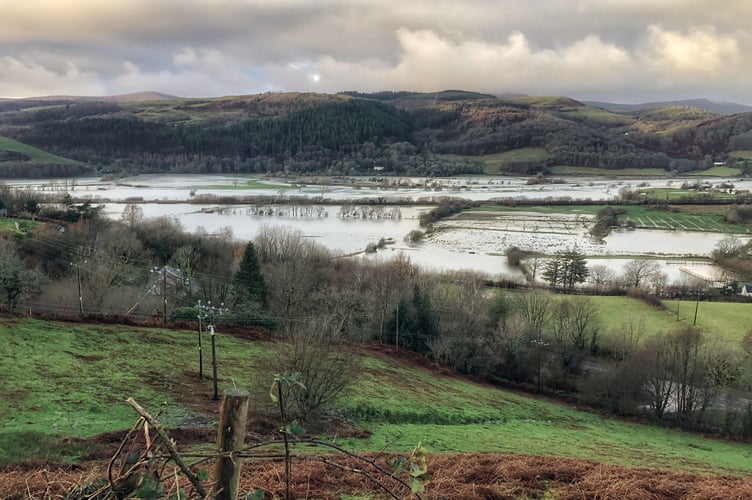Road closures were in place across Powys and Ceredigion, and one community hall was flooded thanks to heavy rains on New Year's Day.
Warnings were issued from Natural Resources Wales and a yellow warning for severe weather came from the Met Office after 10cm of rain was forecast for north Wales.
Flooding was visible across the Dyfi Valley flood planes as the Dyfi burst its banks.

The A487 through Derwenlas was closed after the road was submerged after a car got stuck attempting to drive through the flooding.
Derwenlas village hall also suffered, flooding the building with several inches of water just hours after a New Year's Eve party was hosted at the venue.
The A487 was reopened on the evening of New Year's Day.

The flooding was accompanied by pollution alerts across the north and west coast of Wales from Surfers Against Sewage live pollution map.
Due to the heavy rain, Dŵr Cymru/ Welsh Water sewage outlets discharged sewage overflow from as far south as Llangrannog, New Quay and Llanrhystud, to Aberystwyth, Clarach, Aberdyfi, Tywyn, Barmouth and across the Llyn Peninsula on New Year’s Day.
Though the heavy rains have subsided, another yellow warning is in place for Saturday 4 January across Wales due to an expected 5cm of snow, beginning from midday and ending at 9am Monday 6 January.

The Met Office warns of a ‘small chance’ of power cuts and other services potentially being impacted by the weather, especially in remote areas.
The forecast adds: “Whilst there is a fair bit of uncertainty as to how far north this may spread, and how long any snow will last, significant accumulations of snow are possible, especially (but not exclusively) on hills.
“Currently, parts of the Midlands, Wales and northern England are most at risk of disruption, where 5cm or more could accumulate fairly widely, with perhaps as much as 20-30 cm over high ground of Wales and/or the Pennines.
“This, accompanied by strengthening winds, may lead to drifting of lying snow.”
It adds there is also a risk of ice.




